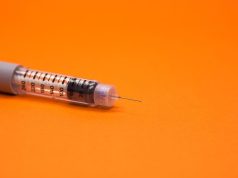Second study shows no increase in treatment for individuals with opioid use disorders
TUESDAY, Oct. 13, 2015 (HealthDay News) — Trends in opioid use and treatment of opioid use disorder (OUD) are described in two studies published online Oct. 13 in the Journal of the American Medical Association.
Beth Han, M.D., Ph.D., M.P.H., from the Substance Abuse and Mental Health Services Administration in Rockville, Maryland, and colleagues examined national trends in and characteristics of nonmedical prescription opioid use and use disorders using data from 472,200 adults (aged 18 to 64) who participated in the National Survey on Drug Use and Health. The researchers found that the prevalence of nonmedical use of prescription opioids decreased from 5.4 to 4.9 percent from 2003 to 2013; during the same period, the prevalence of prescription OUD increased from 0.6 to 0.9 percent.
Brendan Saloner, Ph.D., and Shankar Karthikeyan, M.P.P., from the Johns Hopkins Bloomberg School of Public Health in Baltimore, used the 2004-2013 rounds of the National Survey on Drug Use and Health to examine the trends in prevalence of treatment for OUD. The researchers identified 6,770 respondents with OUD. This population became older, more likely to use heroin and other substances, and less likely to have private insurance over time. The percentage receiving treatment was 16.6 percent in 2004-2008 and 21.5 percent in 2009-2013 in unadjusted analysis (P = 0.005). The rates were similar after regression adjustment (18.8 percent in 2004-2008 versus 19.7 percent in 2009-2013; P = 0.59).
“During the decade from 2004 to 2013, use of treatment remained low for individuals with OUDs and did not increase after accounting for changing population characteristics, underscoring substantial room for improvement,” the authors write.
One author from the Han study disclosed ties to the pharmaceutical and technology industries.
Abstract — Han
Full Text (subscription or payment may be required)
Abstract — Saloner and Karthikeyan
Full Text (subscription or payment may be required)
Editorial (subscription or payment may be required)
Copyright © 2015 HealthDay. All rights reserved.








